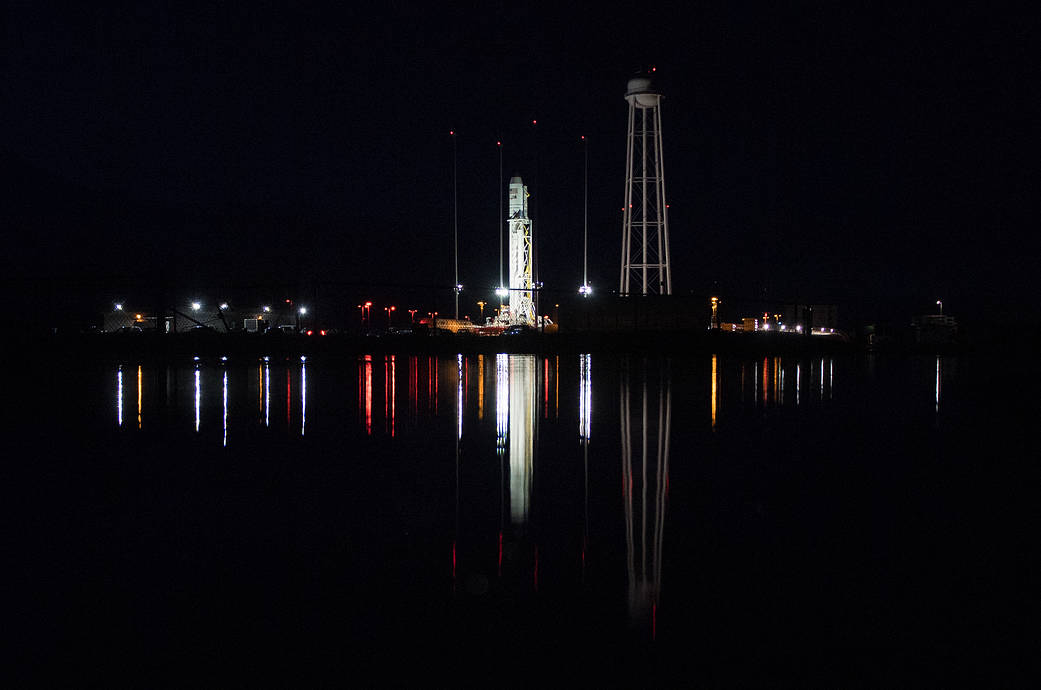An Antares Rocket Will Launch Cargo to Space Station Saturday! How to Watch Live.

On Saturday (Nov. 17) at 4:01 a.m. EST (0901 GMT), Northrop Grumman's Antares rocket will launch the Cygnus cargo spacecraft to the International Space Station as part of Northrop Grumman's NG-10 mission.
The cargo spacecraft will carry approximately 7,400 pounds of food, clothing, equipment and scientific experiments to the space station. Northrop Grumman's Antares rocket will launch with the spacecraft from Pad-0A at Virginia Space's Mid-Atlantic Regional Spaceport at NASA's Wallops Flight Facility in Virginia. You can watch the launch live here on Space.com starting at 3:30 a.m. EST (0830 GMT), courtesy of NASA TV.
The Northrop Grumman Antares rocket launch will be visible along the eastern coast of the United States.
The Cygnus spacecraft will carry scientific equipment including a 3D-printing recycling device called the Refabricator, a protein-crystal-growing experiment in partnership with the Michael J. Fox Foundation, a carbon-capture experiment and much more. [Reusable Rocket Launch Systems: How They Work (Infographic)]
The launch was originally scheduled for the morning of Thursday Nov. 15, but inclement weather pushed the launch to Friday morning, and then to Saturday. As of this morning (Nov. 16), officials have indicated that weather conditions look good for Saturday morning, with a less than 5 percent chance of weather-related concern, and that the launch is on track.
The Cygnus spacecraft is set to arrive at the space station Monday (Nov. 19), the day after a Russian Progress cargo spacecraft docks with the station. Astronauts will grapple the approaching Cygnus and berth it with the space station. Then, the work will begin unloading the crucial cargo. The spacecraft is set to stay at the station for three months, according to officials, and after it detaches from the station it will deploy cubesats and complete other missions before returning to Earth and burning up above the South Pacific ocean.
Follow Chelsea Gohd on Twitter @chelsea_gohd. Follow us @Spacedotcom, Facebook and Google+. Original article on Space.com.
Get the Space.com Newsletter
Breaking space news, the latest updates on rocket launches, skywatching events and more!
Join our Space Forums to keep talking space on the latest missions, night sky and more! And if you have a news tip, correction or comment, let us know at: community@space.com.

Chelsea “Foxanne” Gohd joined Space.com in 2018 and is now a Senior Writer, writing about everything from climate change to planetary science and human spaceflight in both articles and on-camera in videos. With a degree in Public Health and biological sciences, Chelsea has written and worked for institutions including the American Museum of Natural History, Scientific American, Discover Magazine Blog, Astronomy Magazine and Live Science. When not writing, editing or filming something space-y, Chelsea "Foxanne" Gohd is writing music and performing as Foxanne, even launching a song to space in 2021 with Inspiration4. You can follow her on Twitter @chelsea_gohd and @foxannemusic.









